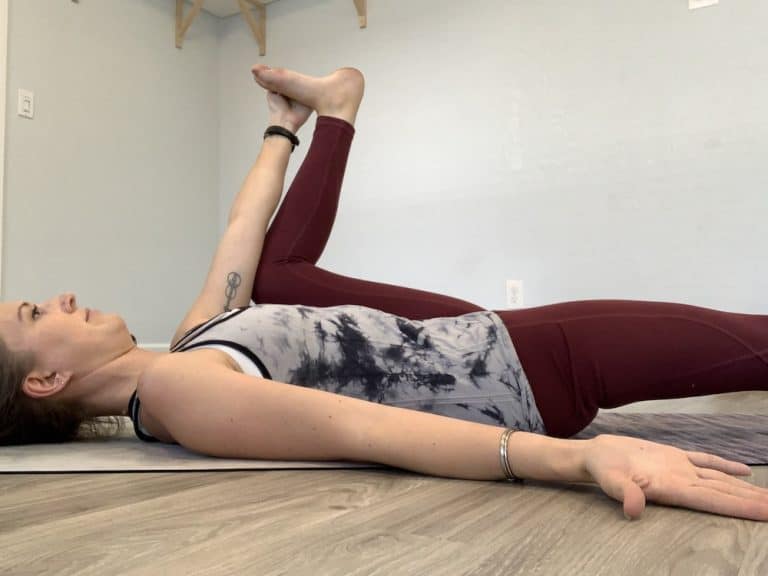Just like any muscle in your body, your pelvic floor can be too loose OR too tight. While many women worry about being too lose (hypotonic) and kegel like crazy, as much as 40% of postpartum women are actually too tight (hypertonic).
These pelvic floor stretches are great for when you are hypertonic and need to retrain the pelvic floor to relax. (Note: These aren’t a substitute for medical advice! If you have symptoms, you should see a pelvic floor PT, or run these exercises by your doctor/PT if you are currently in care.)
Diaphragmatic Breathing
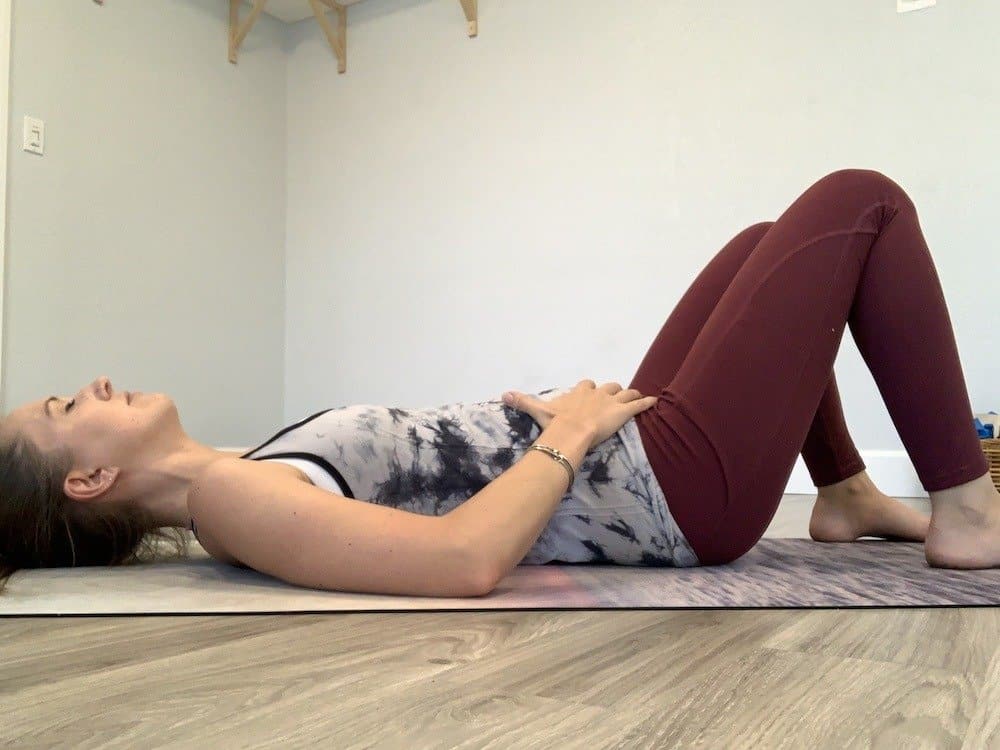
Diaphragmatic breathing is the simplest, but often the hardest thing you can learn to help your pelvic floor relax. Most of the women I see who are hypertonic are chronic “tummy-suckers” (meaning they suck their belly in all the time), and paradoxical breathers.
Paradoxical breathing is the opposite of diaphragmatic breathing. This is when you inhale and suck your tummy in (usually while also puffing the chest up). And while exhaling, you either left your belly fall out, or you keep it sucked in for both the in breath and the out breath.
Diaphragmatic breathing is the way humans are anatomically designed to breathe while at rest. It looks like inhaling and feeling the belly naturally fill and expand with air, and exhaling to let your belly fall back down. There is no effort on the inhale or the exhale. The breath naturally inflates the belly like a balloon.
When you inhale and your belly fills and expands out, your pelvic floor fills and expands down, creating a natural stretch and release of the pelvic floor muscles. At first, you may not be aware of this movement, but over time, it may begin to feel more obvious. When you exhale, both the abs and pelvic floor naturally rebound. There’s no effort or kegeling action.
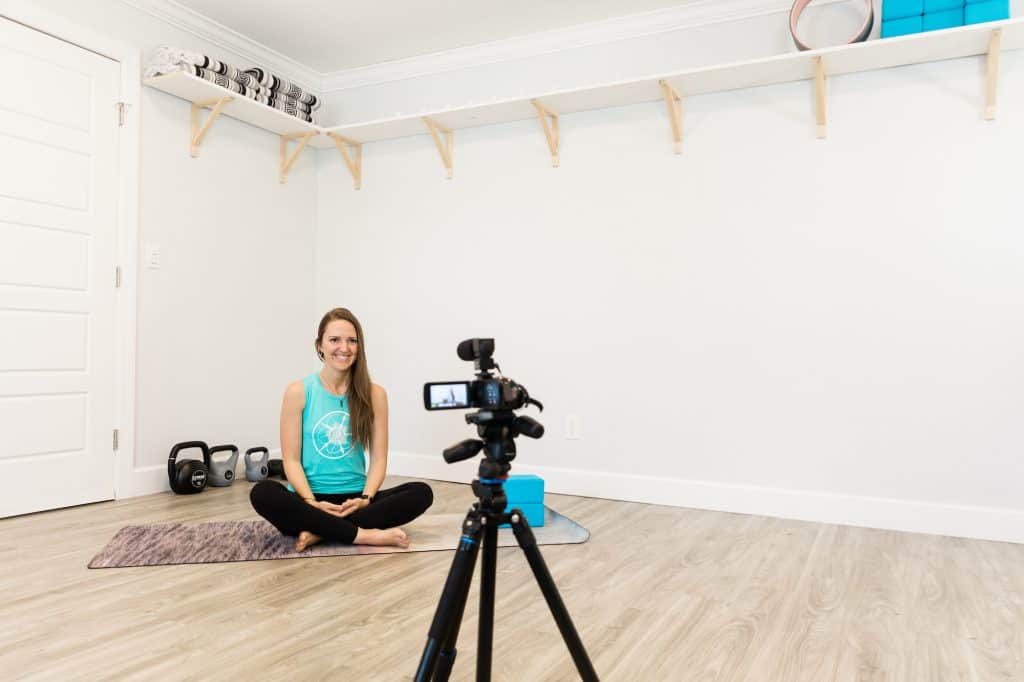
Need more help?
Access a free video class that walks you through:
- What a “tight” pelvic floor (PF) actually is — and how it’s possible to be both weak and super-tight.
- My 4 top exercises and number 1 breathing technique for PF tightness.
- How to modify and adjust these exercises for where you’re at right now.
- What your road to healing can look like.
Half Happy Baby
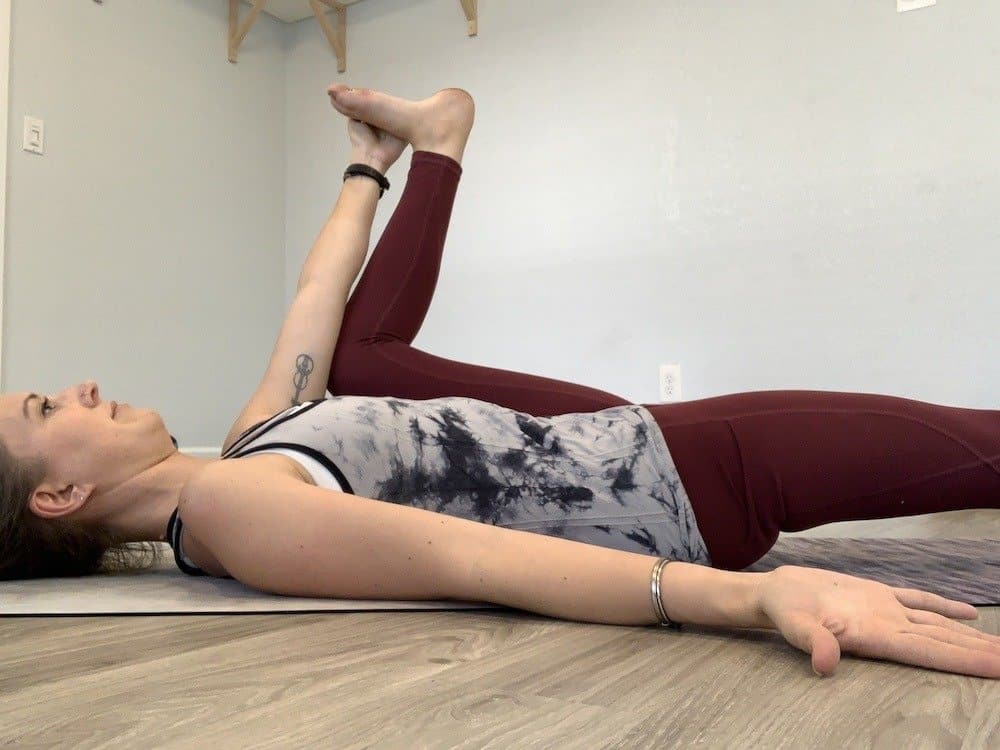
Half happy baby is a yoga pose where you draw your knee into your chest and then slightly out toward your same-side armpit. In the photo above, this is my left knee toward left armpit.
Then, you reach with your same-side hand (my left, above) to grab a hold of the foot. Not everyone will be able to reach the foot, and that’s ok. Hold the shin or the back of the thigh instead.
If you’re holding your foot with your hand, turn the sole of the foot to face the ceiling and use your hand to draw your knee down toward the floor outside your ribs.
Take deep diaphragmatic breaths into the belly and pelvic floor. You may feel this stretch anywhere through the thigh, hip, or pelvic floor. (Repeat to the second side.)
Happy Baby
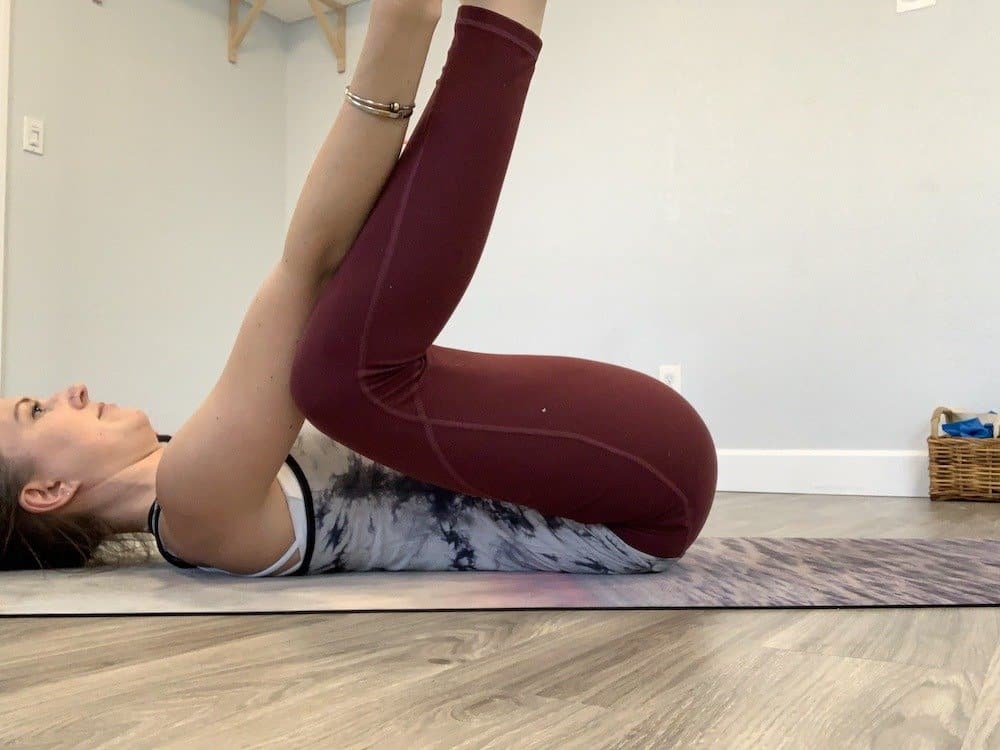
Full happy baby usually feels a little more intense than half happy baby, as you’re stretching both sides at the same time. Simply do the same thing as half happy baby, but with both legs at once. Encourage the tailbone to drop toward the floor and breathe into the pelvic floor.

Need more help?
Access a free video class that walks you through:
- What a “tight” pelvic floor (PF) actually is — and how it’s possible to be both weak and super-tight.
- My 4 top exercises and number 1 breathing technique for PF tightness.
- How to modify and adjust these exercises for where you’re at right now.
- What your road to healing can look like.
Yoga Squat
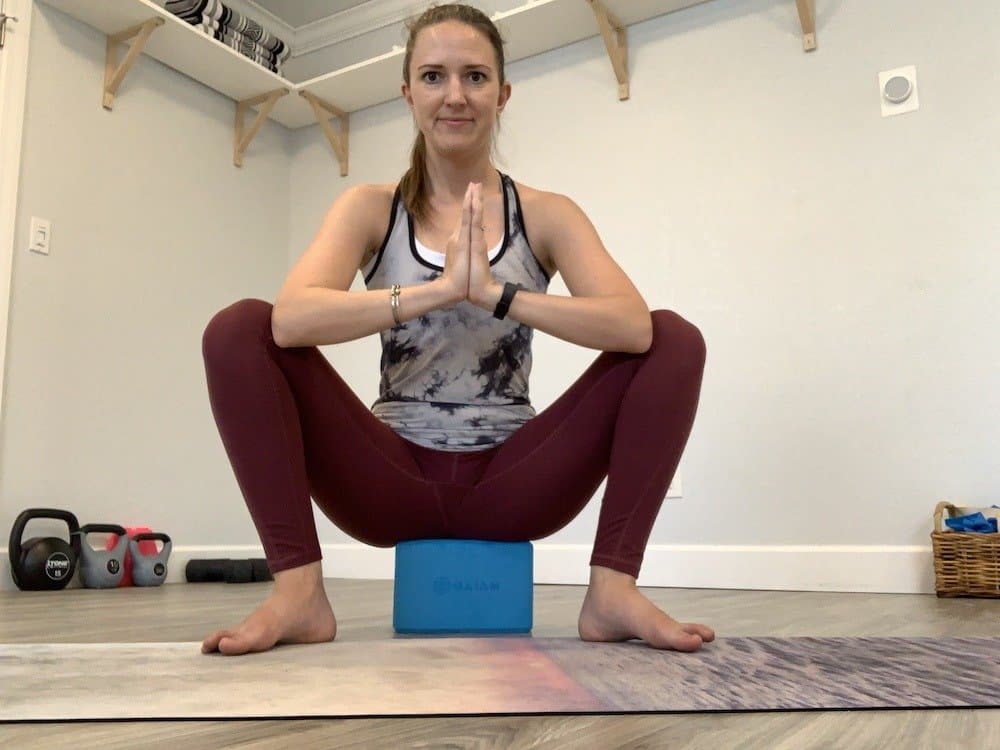
Use a yoga block or two, a stack of books, or even a sturdy box to sit your hips up 6-8 inches above the floor, or as high as you need to be.
Walk your feet in toward your seat as close as you can while keeping the heels down. You can play with the level or rotation in the legs, keeping the feet wider or walking them narrower so the toes point straight forward. Breathe in each position and observe what feels like the best stretch to you.
Puppy Stretch
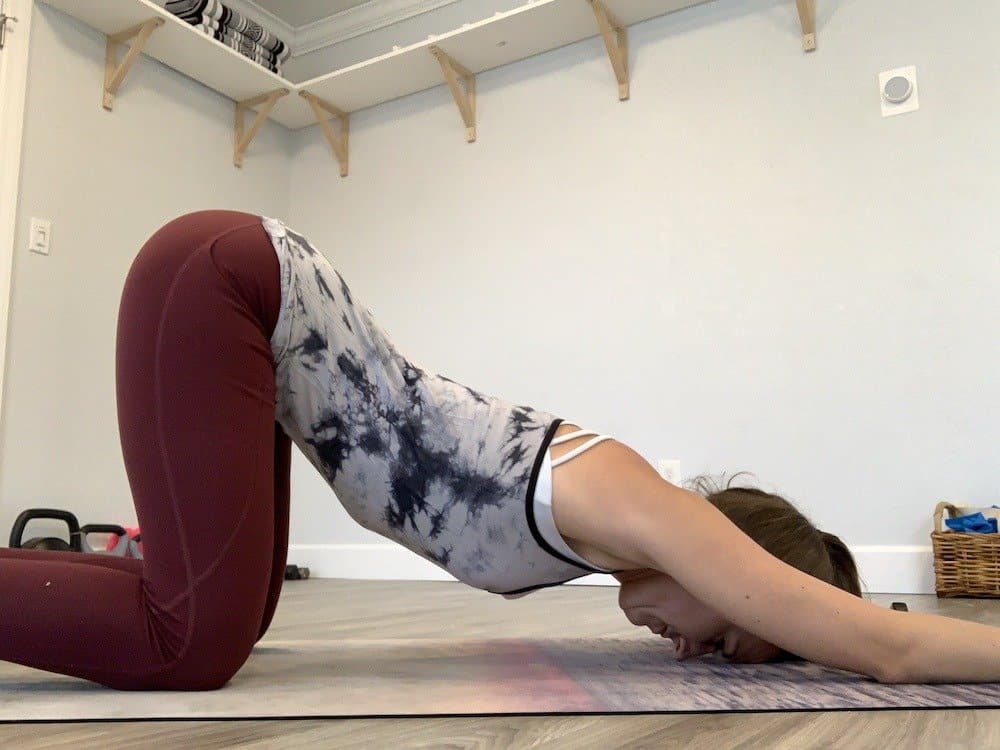
From hands and knees, walk your hands forward. Keep your hips over your knees as you drop your chest toward the floor. Rest your head to the floor or a pillow/blanket/block. Think of lifting and flaring your sit bones up and open.
Massage
If you are comfortable with it, you can perform a gentle massage on yourself. Some women find that being able to take their time and relax creates less discomfort than having a PT or other professional introduce their fingers or a tool into the vagina.
With clean hands and lubricant, insert one or two fingers into the vagina. Gently massage the vaginal walls, moving from the front-right, back, and to the front-left, avoiding the front side of the vagina. (In other words, if the urethra were 12 o’clock on a clock and the anus were 6, you’re moving from 2 through 10 o’clock.)
Some clients have told me they prefer to do this in the shower when their body is warm and relaxed.
Practice Your Pelvic Floor Stretches Routinely
Practicing these stretches daily or several times a week – particularly the diaphragmatic breath as often as possible – will often have a huge positive influence on any tightness or discomfort in the pelvic floor.

Need more help?
Access a free video class that walks you through:
- What a “tight” pelvic floor (PF) actually is — and how it’s possible to be both weak and super-tight.
- My 4 top exercises and number 1 breathing technique for PF tightness.
- How to modify and adjust these exercises for where you’re at right now.
- What your road to healing can look like.

